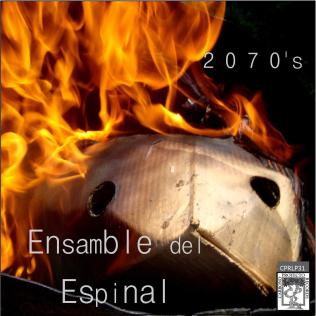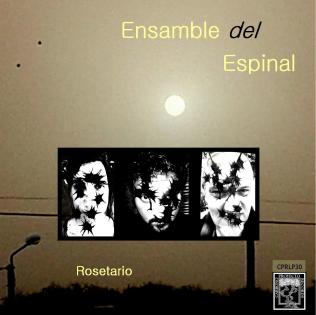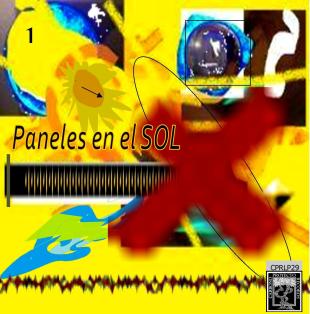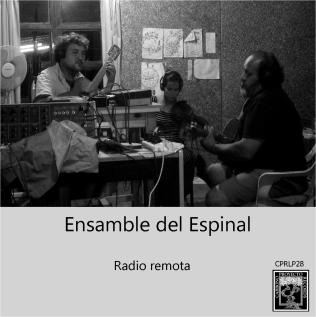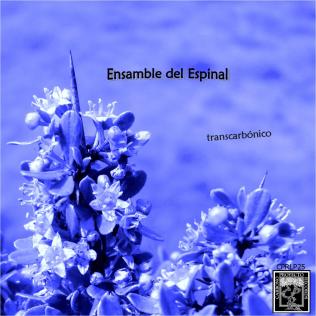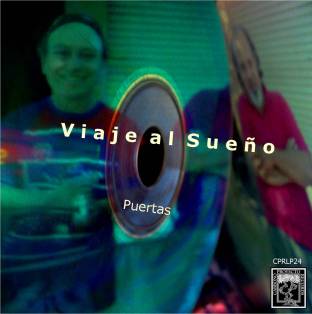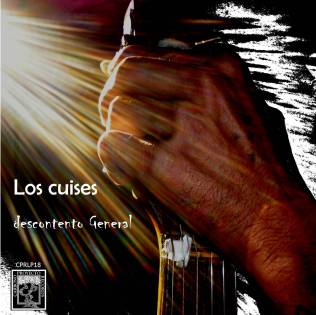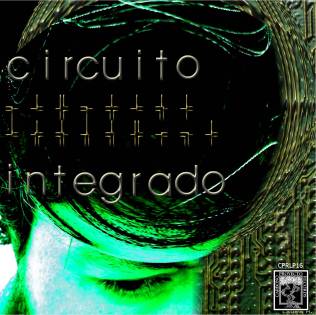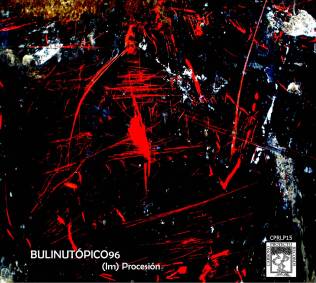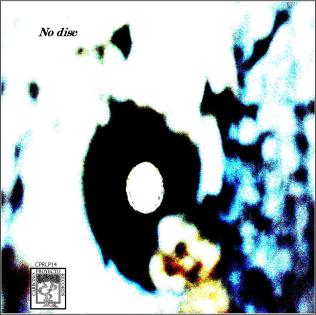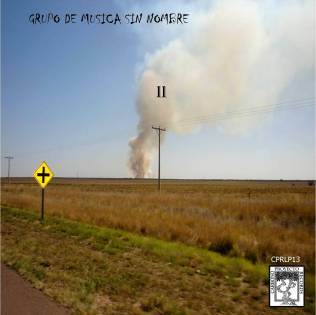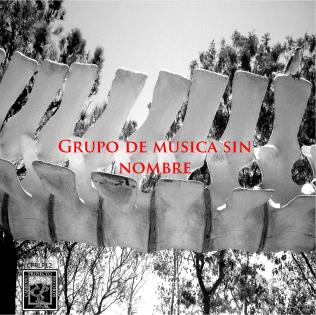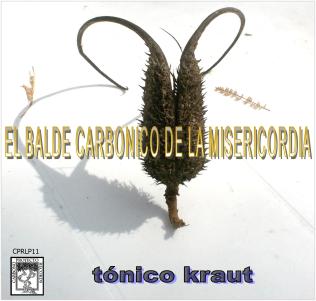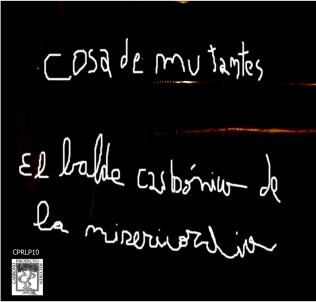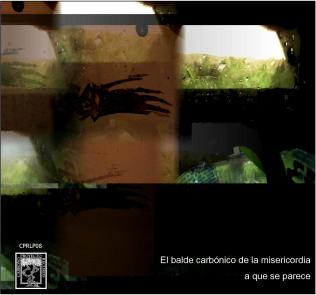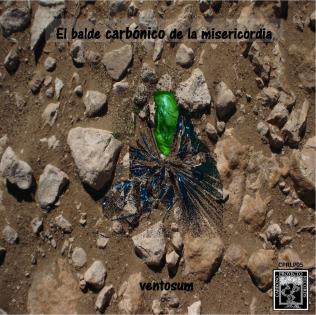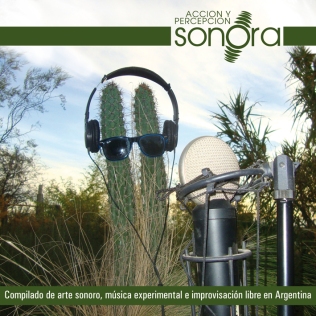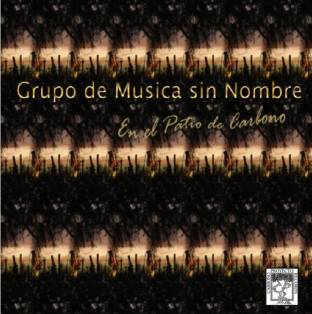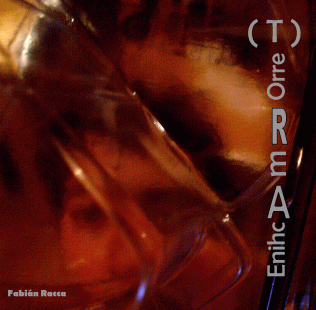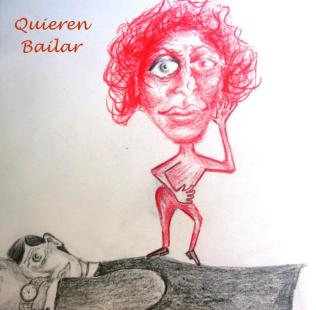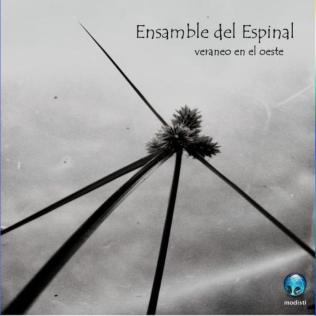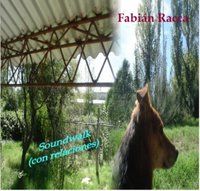
Fabián Racca, Argentinian guitarist and sound artist, worked since 1989 as an independent and self-taught musician in experimental sound, radio art, musical improvisation, field recording, deep listening, designing soundtracks for theater and advertising among other interests. He's the heart of Carbonoproyecto, a self-managed space for nuclear and disseminate these interests and work to develop them.
His sound works have been published by labels in Argentina and Spain and the piece "Screen murmurs " was selected as part of the International Festival 60x60 (Vox Novus , New York) . He has presented his work at various locations in Argentina and Mexico and has published papers in journals such as Musicworks (Canada ) and The Journal of Acoustic Ecology ( Australia ) and the compilation Anthology of Essays on Deep Listening , edited by Monique Buzzarté & Tom Bickley (New York, Deep Listening Publications, 2012). He has been interviewed for, and his works have been reviewed by various graphics and virtual - mass Argentina , Germany, USA , England, Spain , Mexico and Brazil.
What do you remember about your first guitar?
When I was about 7 years old I lived in a small rural village of La Pampa and my parents saw me trying to make my uncle's guitar sound. I used to listen to him as a child, when he played in family gatherings in the farm where my grandparents lived. One day my parents heard that the son of a local neighbor had received its guitar teacher certificate and they asked me if I wanted to start studying there, to which of course I agreed gladly. Well, they bought me a used guitar I do not remember from who, but it was a semi-concert classical guitar of the "Jivaro" brand, which I still keep and I usually use for improvisations with friends, or when I feel like meditating for a while with a direct acoustic sound. In the experience with "Los Cuises" that was one of two guitars that we always used , either by adding pieces of nylon to its ropes, by repairing parts of the bridge with paper or small pieces of wood, because it was badly damaged . Funny how its presence and status has been changing through different stages of my life.

Around 1979 I stopped studying music after a few years because I was bored by the learning system, I did nothing but memorizing scores, exercises, songs, and while I was doing very well on tests I obviously did everything by heart because 4 or 5 years after quitting I had completely forgotten most of it. I read a score and did not understand how is it that I could play it years before. And the guitar was left in a corner and used it to improvise songs only every once in a while, just as a hobby. When I went to college in Santa Rosa, capital city of La Pampa, to study Geology and Renewable Natural Resources (something quite far away from art), I took it with me, although I hardly ever used it. When I started experimenting on radio in the late 80s and early 90s, I began to use it to record and sample parts into works of art of radio, but it was only since 1997 that I returned to reconnect myself with her through experimentation and the search for a possible language in which I actually came upon, and not on conventional music, whose technicalities I had long forgotten . From there onwards it is with me and a couple of years. A couple of years ago, a friend of mine who is luthier repaired it, so here it is to continue playing for many years.
Why do you need music? Can we live without music?
In my case the music (in a very broad sense), is always present even when it's not playing. Music works as sense, as a way to establish a dialogue between the soundscape and our body and mind. I think of it as a necessary expression of a life that vibrates. It is also critical in terms of the need for aesthetic pleasure, a blessing that we human beings have, and that is manifested through art or contemplation, and secondly as a search tool, for the discovery of possible worlds that perhaps in practice they can never be expressed with the freedom they do it in music or sound practices. In the sociocultural context where I live there is also another important function of music, that is almost dissapearing, which is its transgenerational presence as part of oral tradition, as a cultural heritage that goes beyond what can be represented through folklore (as folk genre) today.
In La Pampa the last surveys were made in the early 70s by musicologist Ercilia Moreno Cha, who warned about the impending disappearance of these popular practices by musicians playing in their home environments influenced by what they heard from their parents, grandparents. It was something that had been made over many years, sometimes centuries. Various factors such as increasing urbanization and the arrival of media spreading Western cultural machinery, started putting out these practices and their particular sound. Nothing of what was on the radio sounded like the music of oral tradition, in any case it might have been influenced by it but it was fit to carry the Spanish tuning, Western harmonic structure and it was performed by professional musicians and not by rural workers who made use of alternate tunings that facilitated their access to the musical experience. Soon the new generations started feeling all that sounded wrongly, that it was something of the past, and it just stopped being done. And with this cultural loss also was missed the idea of music as a "place to go" where what mattered most was that experience. I think that somehow early local music was emptied of its trance, it was turned into songs with a recognizable format for the culture industry, and the role of music as identity in time and space became part of a set of shortcomings impossible to meet.
There is currently a lot more of music than in the past, but I find that less is listened to (at least intently, I mean). We have it as background in different environments we go to daily, and is mostly just part of the entertainment industry. Of course I think it is a society that can live without music, in the sense that there is something less important to it than other consumptions, I mean it doesn't need it as a deep or liberating experience. On the other hand I wonder whether our society depends on music as a noise to isolate itself from the bigger noise of the city, or as a way to control environments, or even to escape from silences that can be uncomfortable. I remember a documentary film about Nusrat Fateh Ali Khan's family in Pakistan, where they are playing in to street audience, very poor people, and yet they gave them their little money in appreciation for the musical trance, something that shocked me at first because from my logic that just didn't seem right. However as the film goes on you realize that music for them is a very strong spiritual necessity, not mere entertainment, it was clear that for those societies, life without music would lose a very strong motivation.
Which is the main pleasure of the guitar?
I am someone who uses the guitar as an exploratory tool (and other instruments or apparatus likewise), i.e. I do not have anything in mind to play, my development is from listening to what actually came to me when I was playing and not what I wanted to have sounding. Given the choice to resume my studies to continue with the conventional way of playing or deepen in a way that the same body and listening were inviting me to go, I opted for the risk of not knowing what will happen. My greatest pleasure, then, is to discover worlds, hidden corners, possibilities with the guitar when playing which surprise me, and there is something that amuses me that is to get to that point where I can see how it all sounds as if I was out of the performance, as if it was involuntary, it makes me laugh. Over time I learned to realize that the most important thing in this method is the energy itself, the capacity of internal harmony of what is happening. In the early days of these observations it happened that I grabbed the guitar which had an indefinite pitch that was not produced by me but by small atmospheric changes and tensions that change just because it has been put away, and it took me a lot of time to feel pleasure with what I was playing, there seemed to be a gap between my listening intensity and the sounds. Over the years, what I can say that strengthened was this ability to tune into the sound stream of each time.
Signal me one musical work which has provoked a change in your music.
Even if there has never been a single work the determinant of changes but rather a mixture of different approaches, having discovered an album like Trout Mask Replica by Captain Beefheart (very late compared to many artists but a finding at last, in the early 90's) had a liberating effect. That work showed me it was possible that all happened within the same music and still itself. Somehow I stopped finding it contradictory or lacking of course the fact of constant change led by a creative energy that manifests in different directions at once.
Where are your roots? What are your influences?
I think my musical roots are in the air, in different places and times, in a mix that starts in a series of rural experiences far away from modernity, though not unsophisticated, listening to the musicians playing in the oral tradition family or friends meetings, in AM radios that could be tuned in La Pampa in the 70's and 80's, and their spreading of traditional music, some rock, jazz and commercial music. Later, I had other influences during my days in Buenos Aires at age 15 when I had to move to live there for more than a year, to undergo treatment against cancer that risked my life (in the rural interior there were no medical resources to face such a disease). That meant a tremendous change in my perception of the world, I entered the logic of a huge city where TV, radio, and in the same streets there was a whole musical world unknown and attracted me strongly.
I started to come into contact with metal, with more acoustic country rock, with pop, with was known as "techno" music in those days, and with progressive rock among many things that I lapped up and helped me get through the hard times chemotherapy, surgery, and the awareness of the presence of death as a real, palpable possibility, palpable, at the same time I discovered an unstoppable life force out there. I remember it was right for the time of the return of democracy, I got sick in 1982, still during military dictatorship, and in that year the social unrest in the streets of Buenos Aires was very powerful for me: hidden or forbidden music flourished everywhere. Furthermore, the city was a sonic universe that amazed me. Afterwards, when already living in Santa Rosa, I kept on listening and trying to learn different music collections from my University fellows who came from different parts of the country.
In the late 80s, listening and then entering the BDC 107 FM radio made me feel more in touch with different types of music and have a clearer picture, but no less rapid, about the location of each in time, their history and context. Late in my time in radio where I definitely developed my passion for experimental music, I could get access to journals that opened the world of music to contemporary and thus came into contact with the ideas of people like John Cage, La Monte Young, Pauline Oliveros, Malcolm Goldstein, John Oswald, Derek Bailey, AMM, Negativland and many others. After the radio was shut down, I also found it very rewarding to go round works and music experts' surveys that helped me understand what meant those so many experiences I had gone through my early years in La Pampa, and discover other unknown facets. At some point, it was a great revelation to get to knows old stories of oral tradition in my own family, closely related to certain ideas that were hovering in my searches.
I also really influenced by the recording technology of environments, since listening to soundscapes led me to try to experiment with the environment in real time, even with the guitar, as part of the environment, not as a central discourse. As you see my roots are in the air but also in time
My new root place, Casita de Carbono is a log cabin we built in 1998, Toay, so that we could have a home and stop paying rent, (we lived in Santa Rosa). As the house grew bigger with the years, in the following years it became increasingly a recording studio, even though there had always been some space for these purpose when it was our only space. It has very good acoustics, and its walls and floors absorb sounds very well. Beyond the jam sessions, chats and experimentation, it is my place of daily work in the Carbonoproyecto, accompanied most of the time by the sound of computers, recordings and some playlist. There are some beds so that visitors coming to the sessions can sleep and a nice window that communicates with the Patio Carbon and a native plant nursery. It is an environment that I find it very meditative, necessary for concentration, and it was here where I have recorded most of CP Productions. Is equipped with a mix of gadgets I got through time, from mixers and analogue consoles of the era of radio, guitars, toy drums, an old synthe from the 70s, many cables, mics, to some newer computer or recorders. There ir virtually no professional equipment, but they are all useful. Today it remains as a protected place, since it is surrounded by the rest of the house and nursery structures , although in the early years it was a small cabin in the middle of La Pampa, and it could be seen from afar like peeking through meadows and pastures.

How many guitars do you have? Select only one and tell me why.
I have two classical guitars (here called "criollas"), the oldest on I mentioned, and a "fogonera", which is smaller and usually played in rural settings, plus an electroacoustic one and an electric Strato. The latter is the one I'd choose, because I bought it from a friend who then ended up in a psychiatric hospital and accompanied me for about 20 years, it has very soft strings, it is easy to play, and has a very clear sound. Throughout the time I have used it through various experiments and over the years it features every time more sub-sounds, noises that I try to incorporate to the overall sound by contact mics or recording it by line and air at once.
Define the sound you're still looking for, or the sound you'd like to hear.
Among the many birds that abound in La Pampa, I love the lark, which is an amazing bird, which is always changing its song, with unexpected twists, incorporating in its sound the singing of other birds and in even other sounds it hears. And it sings alone or in the company of others of its species, sometimes at night, even the whole night through, and it is difficult to distinguish whether it is one or more. While it sings it usually turns somersaults in the air, as if it were an expression of joy, or trance. The usually walk in my yard and more than once I recorded them at night on the forest. There is a poem by a somewhat unknown pampeano writer but whose works are of universal value, Juan Carlos Ortiz Bustriazo, which also relates this bird to the guitar. I take the liberty of respectfully associate that poem also to free improvisation (although the intention and musicality of the text has more to do with tradition, the author mentions his singing as tonadas, huellas, milongas, estilos -traditional local music formats- perhaps wanting to give an idea of the enormous diversity of its trill) , and in fact this poem was set to music in the estilo type by pampeano musician Delfor Sombra.
But from my point of view, the lark improvises all the time. It goes like this:
“En un paisaje de adobes y de piedras solitarias
debajo del cielo puelche una calandria cantaba.
En el corazón tenía una guitarra hechizada.
Cuantas cosas le salían de su sangre enamorada:
Todo el canto de la tierra le cabía en la garganta
Que Dios remoto y silvestre le regaló tanta magia?
Era el triste de los yuyos, la huella de las aguadas,
era el estilo del viento, la milonga de las bardas.
Porque mil pájaros sabios era la sola calandria.
Una vez regresó el río con pifulcas desbordadas,
y sus viejas sinfonías me repitió la calandria
Era una niña de cobre con un cacharro de lágrimas.
Dónde andará con su canto?
De quién serán sus tonadas?
Con esta música vuelve,
pero mi voz no la alcanza.
Se me ha vuelto la Calandria una guitarra con alas! “
(Autor: J. C. Bustriazo Ortiz – 1970)
"In a landscape of adobes and solitary stones
under a puelche [location in La Pampa] heaven a lark sang.
At its heart lay a spellbound guitar.
How many things came out its blood in love:
The whole singing of the Earth fit in her throat
Which remote and wild God gave it so much magic?
It was the saddest of the weeds, the track to water sources,
it was the estilo [musical style] of the wind, the milonga [musical style] of bardas.
For a thousand of wise birds was the lark.
Once the river returned with pifulcas [native Indians musical instrument] overflowed,
and its old symphonies the lark repeated me
it was a copper girl with a pot of tears.
Where will it walk with its singing?
Whose tonadas [musical style] will be theirs?
With this music it returns,
but my voice does not reach her.
The lark has become a guitar with wings!"
(Author: J. C. Bustriazo Ortiz - 1970)
How would you define the present time in musical terms?
I think this is a time with endless proposals but mostly controlled by the culture industry, which manages to get so many musicians who live by their work (as well as those who aspire to do so) to think about what kind of work must they do to fit in this or that niche rather than be swayed by what could actually flow through them. But on the other hand, and thanks to technologies such as web and widespread musical production tools, which facilitate the "do it yourself ", there is a growing of non-commercial trend, although it is very little known beyond the web and specialized media. Now this does not mean that musically all this trend implies real innovations or escapes from stereotypes, is very hard not to sound obvious when you grow up with lots of information all the time. That is why so much of the experimental music is also taken by many common and predictable places, i.e. it has no more of the experimental kind, of trying to see what happens. I think the big challenge of music in general is for it to arise from a real search process that may not previously take into account the industry or field to which it may want to belong, but that it rather then may look how to present it to a supposed market or audience. That is, the challenge for it is to be a life practice first, not a career plan, to have time to reflect on itself.
What are the differences between working alone and as a group?
Individual work always brings me to a more exploratory field, where I can be without time limit only experimenting and playing with an idea without the compromise of reaching to any result. Working with a group is rather based on the ideas of them all, where everyone brings the individual developments towards achieving a group assembly of all that.
There were several experiments over time in either Carbonoproyecto duos, trios or larger groups and I have to say that I owe them the real strengthening in my playing. It is very important to know that what you're doing is well received by other people who invest their time and talents to share a musical work. I feel that I was lucky to find people to make music in different stages of my development, both with instruments like guitar or other, as well as with sound art, poetry, monologues and stories in real time. I am grateful to people like Gustavo Sidam (Los Cuises), with whom we were able to experience the possibilities of raw guitars, with indeterminate pitches, which led us through paths with another logic as regards song, perhaps connected to what I imagine might have once been music as a daily practice, who knows in what kind of environments haha. There was also Javier Maluendres (La Centrífuga, GMSN, El balde carbónico de la misericordia [Carbon bucket of Mercy]) , rock bassist and guitarist who contributed his energy, versatility and ability to improvise. And Néstor Tempesta (GMSN, El balde carbónico de la misericordia [Carbon bucket of Mercy]) with whom I shared many years from radio until I was well into the CP , in many different experiments. And finally the greatest gratitude goes to Mario Ayala (Viaje al Sueño, Kosmic Pampeanos , GMSN, El balde carbónico de la misericordia [Carbon bucket of Mercy]) who for nearly 15 years embellishes each session with the expanded , subtle and powerful sound he draws from his processed guitar. Playing with Mario (either as a duo or with Ensamble del Espinal with his daughter Ludmila) is a real luxury for me and his music has helped me to let mine go too.

A valuable advice that someone has gifted to you in the past?
At some point, where I was a little disappointed that so many years of almost obsessive work, pure research outside the central field and logic circuits music, were leaving me increasingly isolated both to share my ideas and works in my environment, to ensure that I was payed attention elsewhere my life partner Claudia told me something, that helped me a lot:
"Maybe you just don't know yet the people with whom you can share this, the world is bigger than a city or a country, in the meantime you are being able to do what you like and that is a great achievement, so enjoy it"
What's your fetish device in the sound chain?
I love different types of microphones, they are supplements that expand what the ear can perceive, or put you in the foreground sounds that you heard but you didn't connect in its potential for sound construction.
What artist, living or dead, would you like to have collaborated with?
There are several, Derek Bailey, for instance.
What’s your latest project about?
I'm still working in different directions at once with Carbonoproyecto. On the one hand, there are my activities with Ensamble del Espinal, a group that despite its difficulties and the remoteness of its members, has been held through time. On the other hand, I'm doing sound art work, some more of noise-kind experiments and video-noise like T-errormachine and La Hostia [The Host], some field recordings, and radio and diffusion experiments with radiocarbon and Carbonoproyecto Records, our netlabel.
Selected Discography
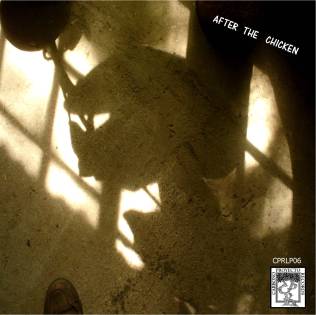
| ||
| 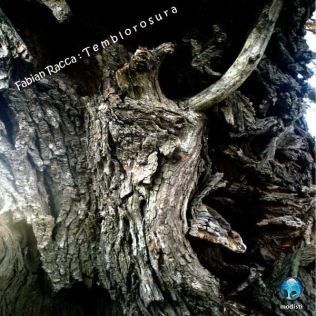
| |
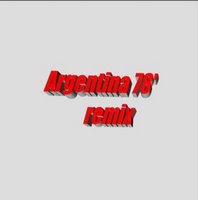
|



